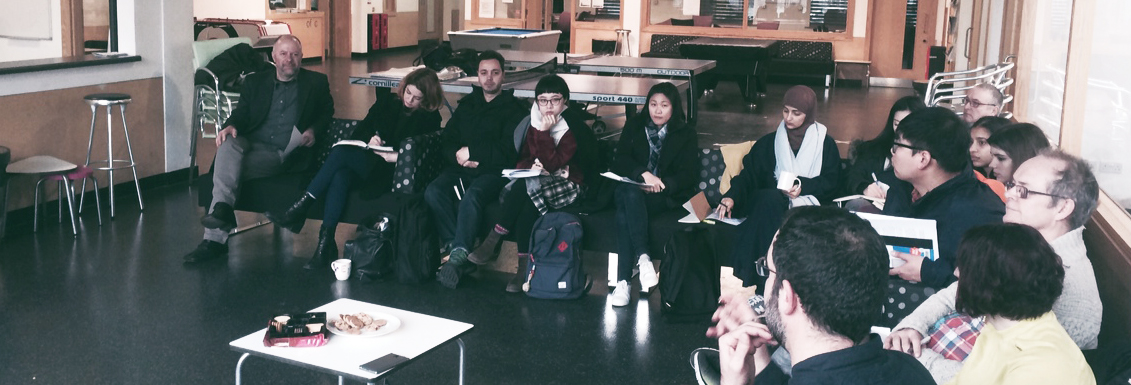
Camden Youth Hubs
The London Borough of Camden is exploring opportunities for reshaping Camden’s youth services, shifting the focus of Council run provision to targeted support delivered as part of a youth ‘hub’ model accommodating the many different services, projects and multi-disciplinary youth support teams.
Working in teams, the MA Narrative Environments students collaborated with Council officers and those affected by the proposed changes, to research and develop designs for the youth centres that will house the newly configured youth services.
The design teams developed and deployed an array of bespoke methods to involve the diverse groups in the process of defining their needs and desires, identifying the key challenges, opportunities and a ‘dramatic conflict’ – the central factor that prevents the achievement of a desired outcome – the resolution of which drives their designed responses to the brief.


Journey and methodology
The project ran over ten weeks and involved the student design teams working both within the youth centres and the design studio. On site-design teams worked with the hub leaders, youth workers and young people that use the hubs to identify their values, needs and desires of the hub so as to understand their diverse requirements and make proposals that met the practical demands of the space in ways that considered and accommodated the emotional and relational perspectives of its users.
The project moved through three phases of activity:
Discover and research
The teams tried to get to know and understand the places and people that they were designing for and identify the challenges and opportunities around redesigning the space to accommodate the coming changes to its use
Define and plan
The design teams defined their research insights and the ‘dramatic conflicts’ that provide the thematic focus of their design activities
Design and development
The teams responded to the practical challenges and opportunities for accommodating the desired uses of the space, addressing the ‘dramatic conflicts’ defined as being central to the improved experience of the space for the people that use it now and will use it in the future.
Outputs and outcomes
Each group produced different outputs and outcomes:
Hub One: Somers Town Youth Centre (STYC)
The design team identified that the young people use STYC because of the interaction between the people and not because of the space itself, defining their dramatic conflict as ‘friendly people – unfriendly space’. They proposed and designed a flexible and multifunctional space with a colourful, visual identity that referenced the interlocking nature of the interior features, as well as the interaction of the young people. Removable walls in the form of pull-down screens allow the space to be welcoming and open at the same time as transforming to create teaching and meeting rooms when required.
Hub Two: Fresh Youth Academy
The Fresh Youth Academy is scheduled for refurbishment and will be temporarily closed in 2018 for an unspecified amount of time. The design team’s final design aspires towards bridging the gap during this time, leading to the team to question ‘can the hub go on without the hub?’ essentially defining the dramatic conflict as ‘taking the hub out of the hub’. Their final design proposal comprises a set of memory walls and soft seats with built-in internet connectivity. The ‘memory walls’ are self-supporting and offer 14 permutations for dividing, screening and creating rooms within space. The soft seats are stored within the memory walls when not in use. The seats can carry information and memory within the materials used for their construction as well as via their internet connectivity to specific web content.
Hub Three: Kilburn Youth Station
The key challenge for the design team was to transform the space from being, as they said, a ‘crowded, clustered space’ to being ‘breathable, flexible with more flow’. The proposed design builds around the central wall within the space. The windows within the space are opened to embrace the height and light available. A door that once hindered the use of the central space is removed and its frame oversized and distended to provide a moveable, private space that can frame the doorway or come out from the wall creating a smaller ‘room within the room’ for more private/one-to-one activities.
